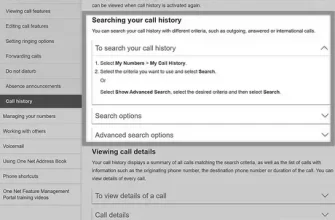If you are wondering what is an Ex parte divorce, you should know what an order is. An order for an ex parte divorce may be a temporary order that requires a hearing several weeks later. Sometimes, spouses and parents wait for weeks to see what will happen. This can be very stressful and costly for both spouses and children. This article will help you navigate the process. We also cover the various types of orders that can be made during an Ex parte divorce.
Ex parte restraining order
There are two types of protective orders: ex parte and ex nihilo. Ex Parte orders are usually issued in cases of domestic violence. When a person is a threat to a vulnerable person, a court must grant a protective order. The order remains in effect until a hearing is held, usually within a few weeks. In both cases, the non-moving party is usually denied their due process rights.
If a person wants an ex parte restraining order, they must appear at court on the appointed day. Although the judge can issue an ex parte restraining order on the spot, the respondent will not be able to contest the order if they do not show up for the hearing. The judge will then determine if the order should be permanent. The judge will also determine whether the order is necessary.
A judge may also issue an open-ended ex parte restraining order if the parties do not show up for the hearing. This type of order lasts for up to 10 years. Although judges are hesitant to issue an open-ended order, they might if the parties are forcing each other to appear in court. The judge has discretion to issue such orders in such cases, but in this case, it’s best to contact a lawyer who is familiar with this process.
In general, courts are reluctant to issue an ex parte order because of the risk to the excluded party’s due process rights. While the court will grant an ex parte motion, it must be justified by the need for a protective order. This type of order is only granted if the other party’s actions will cause immediate irreparable injury. This is a very rare situation, so if you suspect your spouse is destroying property that you can’t replace, it might be worth considering contacting a family law attorney.
The process for obtaining an ex parte restraining order in an ex-parte divorce begins with a hearing in which you must present evidence that the other party is a threat to your safety. If your ex-partner has children or other family members, this can be particularly frustrating. If you have children, contact an attorney as soon as possible to protect yourself. A breach of the Order for Protection could ruin your case.
Ex parte motion for order shortening time
If you want to speed up your divorce, consider an Ex Parte motion for order. An Ex Parte motion is a quick way to get a judge’s attention, but you must make a case for it. These actions must be on notice and require court approval. In some situations, such as those that involve children, the court may grant a stay until the matter is resolved. To make this possible, you must show the court that you have a real emergency.
When a spouse wants to request an emergency order, he or she will file an ex parte motion. This is a way to notify the court of the need for an immediate order, such as a custody or financial order. Ex parte motions are usually only temporary, so your spouse should be notified if he or she is planning to seek emergency relief. In addition, the petitioner must try to notify the other party. In order to make an ex parte motion work, the petitioner must first identify the opposing party. If that is the case, the judge will not order the temporary order.
To make an OSC, deliver it to the General Clerk’s Office. The clerk will process the application and place it on the proper motion calendar. If the ex Parte Justice is absent, an OSC may be handled by a substitute Justice. If the Ex Parte Justice is unable to make a decision on the matter, the parties can submit the motion for the court’s attention outside of normal court hours. There is a procedure for such emergency cases.

After the Justice signs the order, an Ex Parte Clerk will pick up the signed order and file it with the County Clerk in Room 141 B. The Clerk will place a seal on the file. If the order requires it, the complaint will remain in camera in the Justice’s Chambers under seal. The clerk will then notify the moving attorney, who will then serve the Attorney General. This process will take approximately four weeks to complete.
Ex parte order
An ex parte order in divorce is a type of order that was issued by a court without the other party’s knowledge. This type of order is issued when immediate relief is needed or regular hearings would be impractical. However, these orders are rarely granted in divorce cases. If you think that you might qualify, contact a family law attorney to learn more about ex parte orders. You should never act out of spite. While it may be tempting to try and get back at your spouse through the courts, don’t.
In a divorce case, an ex parte order is usually issued when the other party is unable to appear in court for various reasons. When an ex parte order is issued, the other party may file a motion to have a receiver appointed. In such a case, the court will grant the motion and assign a receiver to represent the interests of the plaintiff. The judge can also grant an ex parte order if the defendant is ineligible for the appointed receiver.
While there are many reasons why a court might deny an ex parte custody order, the basic idea behind the order is to make the process easier for both parties. When it comes to dividing assets in a divorce, ex parte orders are often the best option. These orders are usually temporary and require a court to approve the ex parte order. Once granted, an ex parte order is a great tool to resolve your divorce. If you are facing an impending divorce and want to protect your assets, a contested divorce will require you to work with a lawyer to make sure you get the best outcome.
If an ex parte order is issued, you must contact a lawyer right away to discuss your options. It is important to keep in mind that the process can be lengthy and costly. A good divorce attorney will make sure your attorney knows how to approach this matter and make it as painless as possible. By following the steps outlined above, you will be well on your way to receiving a favorable outcome in your case. So don’t wait any longer!
Ex parte hearing
When the husband and wife are unable to agree on anything, including a child custody arrangement, ex parte hearings in divorce cases may be necessary. The reason for requesting an ex parte hearing in these cases is that the parties still live in the same house, and they believe that it will be impossible to remain in the same house during the divorce. If this situation sounds familiar to you, your attorney may want to file an application for an ex parte hearing before you file your complaint for divorce.
An ex parte hearing occurs during a divorce case for the following reasons: 1) the parties are in a heightened emotional state. The judge may be unable to consider the information presented during a normal hearing, such as an emotional state. During the ex parte hearing, the parties present evidence or documents that support their position. Depending on the reason for the ex parte hearing, the judge may decide to enter a permanent order or to dismiss the case.
When a couple has children, an ex parte hearing is often combined with an emergency hearing. Emergency hearings in California are usually granted for cases involving child protection, child abuse, or neglect, or possible kidnapping or abduction. It is possible to get an emergency hearing on these grounds, but it is important to remember that these hearings only last for a short period of time. If they are granted, however, the parties must attend a hearing as scheduled.
In order to get a divorce, the parties should be clear about their expectations. The Judge should be able to determine if the two spouses are capable of working together. Ex parte hearings may be a good option in some situations. Ex parte hearings are often necessary for a judge to hear a difficult case. But if you have an unsuitable relationship with your spouse, you may want to avoid an ex parte hearing in divorce.

In some circumstances, the only way to get an ex parte hearing is when you need to file an application for an order that will have an immediate impact on the lives of both parties. A judge may grant an emergency order to prevent immediate danger or irreparable harm to the children. Ex parte hearings in divorce cases can be a good option in certain situations, like when an ex-spouse would be in immediate danger of losing or damaging property.
Divorce is a legal process for separating a married couple. This process can result in child custody, maintenance fees, and settlement of assets and property. A mutual divorce requires that the male and female partners live separately for at least one year. The divorcee must also prove that he or she has not used marital rights, or have made any adjustment in his or her life to be eligible for this divorce.
Divorce by mutual consent
In India, divorce by mutual consent is a viable option for married couples who have lived apart for at least a year and cannot live together anymore. In this process, both spouses have come to the agreement that their marriage has collapsed. The process begins with the filing of a divorce petition in a court where the couple last resided or were married. If neither spouse resides in the state where the divorce was finalized, the divorce petition can be filed in the county where the couple was married or the wife is living in at the present time.
According to section 13-B of the HMA, 1955, a divorce by mutual consent cannot be finalized before a year has passed since the date of the marriage. Unless both partners are incompatible and are incapable of living together, a couple cannot file a divorce petition under this method before one year has passed. Divorce by mutual consent is only a valid option in some cases if the partners agree. However, there are some exceptions to this rule.
A divorce by mutual consent in India can take anywhere from six months to one and a half years. This timeframe is considerably shorter than a contested divorce, which can take up to three to five years to be final. However, there are some drawbacks to this option. Mutual consent divorces require a lot of paperwork, a family court judge, and several other meetings. The divorce decree is usually finalized six to twelve months after the final hearing.
The process begins by having both parties appear in a family court with their lawyers. During this hearing, the court examines the petition and any supporting documents. If reconciliation is not possible, the court may attempt to encourage reconciliation. If reconciliation is unsuccessful, the court will grant a decree of divorce. The parties are also given a six-month cooling period, which may be extended up to eighteen months, during which both parties can reflect on their decision. However, if the parties still cannot live together, the next step is to file a divorce petition to the district court.
The Hindu Marriage Act, 1955 provides for a divorce by mutual consent. The term «mutual» implies that the husband and wife both wish to separate. Mutual divorces are the easiest, quickest and cheapest divorce process in India. It is often the most favorable option for many couples. The process of getting a divorce by mutual consent in India is easier than most people imagine. The Indian courts are accustomed to giving such a decision, and they understand the importance of their role in the marriage.
Despite the fact that divorce is a serious matter, it can still bring about great joy and happiness for those involved. Mutual consent divorces give couples a chance to salvage their marriage and move on with their lives. In most cases, parties do not waste time in courting each other; instead, they try mediation or reconciliation to end their relationship. If these efforts fail, the divorce is final. It is worth it to try mutually settle all the issues before stepping into a courtroom.
Interim orders
If you are considering a divorce, you may have heard of the concept of interim orders. Interim orders are temporary court decisions, and are often necessary until a final divorce procedure is completed. Interim orders can be applied for in a family law matter by filing an Application About a Family Law Matter (Form 3), Reply to a Family Law Matter (Form 6), or Financial Statements. Once these are filed, they are reviewed by a judge.

The court can also make interim maintenance orders, which require the higher earning spouse to provide for the lower earning spouse. These can be temporary or permanent and are usually awarded according to the earning capacity of the parties. The Hindu Marriage Act provides for both temporary and permanent alimony. However, these orders can be difficult to enforce, and in some cases they can take years to be granted. If you’re seeking an interim order for maintenance, you should evaluate your case carefully to make sure it will be successful.
Once you’ve submitted your petition, the next step in the divorce procedure in India is the trial. At this stage, the court will hear both parties and witnesses, and lawyers will conduct examinations in chief and cross-examinations of each spouse. During the trial, another aspect of divorce procedure in India is called the interim order. If any of the parties wishes to pursue the divorce proceeding, they may file a petition seeking interim orders. If the other party agrees with the petition, the court may grant interim orders, or make an order.
The courts have also recognized that both spouses can have property, and that a wife’s claim to her husband’s property is valid. Depending on the property involved, the court can grant maintenance for both spouses. The court also has the right to order that joint property be divided equally. If your husband refuses to pay maintenance, she can request that he pay her monthly or weekly maintenance payments. There’s also a cooling period of six months to encourage reconciliation.
Another issue that may be handled with interim orders is child custody. A judge may grant interim relief to one parent if they don’t have enough money to support themselves or their children. It’s essential that the other parent does not disrupt the children’s schedule, and if necessary, file for interim orders. This way, the other party won’t be forced to live with the children. It may even be possible to secure custody of the children in the interim.
When the two parties cannot agree on a permanent divorce, they may still file for one. Mutual divorce is a common form of separation in Hindu law. It requires the separation of one party and the agreement of the other. This allows the divorce to proceed in a relatively short period of time. If this happens, the divorce can be final in about two years. And if one spouse has been deserted for at least two years, or if she has chosen to practice prostitution, she can file for divorce without waiting for the court’s final decision.
Service of summons of the other party
If you are about to file for divorce, the first step is the service of the other party’s summons. The summons are sent to the other party by speed post or letter pad of the Advocate. When served, the spouse must appear before the court on the date specified on the summons. If he or she fails to appear, the judge may grant an ex parte hearing to the petitioner. This order will be final.
If the other party does not respond to the summons, you may also have a duplicate summons served. Upon receipt, the other party will have to sign the duplicate. If the other party is a corporate body, the summons can be served on the secretary or local manager. Alternatively, a letter sent through registered post to the chief officer will suffice. When the letter reaches the other party in the ordinary course of post, it is considered as effective service.
A court can also adopt a substituted form of service if due diligence cannot be effected. For instance, if the defendant cannot be found, the court may order the serving officer to affix a copy of the summons on a conspicuous part of the house. However, if he fails to respond within seven days, the court may declare the summons as duly served.
Despite the importance of the service of a summons in a divorce proceeding in India, a party may not receive it. It is possible to make service easier by sending an acknowledgement via postal service. If the summons are mailed, the defendant’s agent may be able to receive it and make it to the court. However, the summons can also be served in other countries.
Divorce in India can be complex and costly. Many parties and their families are affected by the process. By hiring a divorce lawyer, you can avoid any delays and ensure the procedure is completed in the shortest time possible. It can also be more convenient to find a lawyer who knows the law and can help you navigate the process. Service of summons of the other party in divorce procedure in India becomes a simple process if the two parties have a good understanding of the procedure.
After all of these stages, the judge will issue a final order. If both parties are not satisfied with the decision, they can challenge the order in higher courts. Depending on the circumstances, a final order will be issued after all the stages are complete. In the meantime, the process may require further legal action to resolve the case. Once final orders are passed, the parties can file for an appeal.








